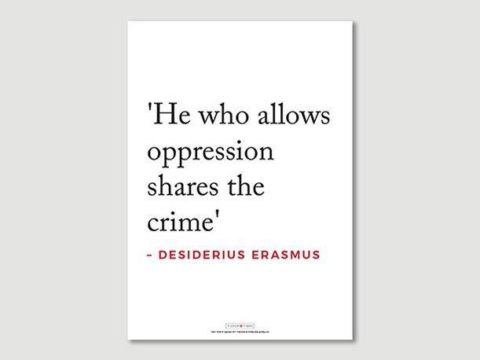Marguerite of Austria: Life Story
Chapter 2 : Queen of France
Despite being only three years old, Marguerite was sent to France immediately, effectively as a hostage for the transfer of her dowry lands. She was taken from Ghent under armed guard, to prevent any change of mind by Maximilian, to Hesdin, accompanied by Madame de Ravenstein, the illegitimate half-sister of her grandfather, Charles the Bold. There, she was handed over to one of Louis’ offices, the Lord des Cordes, in the presence of Louis’ daughter, Anne, and Anne’s husband, Pierre de Beaujeu, Duke of Bourbon. Her familiar governess the Lady of Bouzanton was permitted to accompany her on her journey to France, where she to be brought up as a French princess, alongside her betrothed, who was some ten years older. Marguerite entered Paris on 2nd June 1483, to public acclaim, and was formally betrothed at the chateau of Amboise, after which she was referred to as Madame la Dauphine.
One of the side-effects of the Treaty of Arras, was the jilting of Elizabeth, daughter of Edward IV of England, who had been contracted to marry the dauphin by the Treaty of Picquigny. Edward’s wrath was so great at the outrage that his councillors feared for his health.
On the accession of Marguerite’s betrothed, as Charles VIII, in August 1483, Marguerite, although not finally married, was treated as Queen of France. The government of the country passed into the hands of Anne of Beaujeu and Pierre of Bourbon. Whilst Pierre was officially guardian (not regent), for 13-year-old Charles, no-one had any doubt that Anne was the power behind the throne.
Marguerite became Anne’s responsibility to educate, which she did, schooling the little girl alongside other young noblewomen, including Louise of Savoy, a niece of the French dowager-queen, Charlotte, and Anne’s daughter, Suzanne, heiress to the important duchy of Bourbon. Anne of Beaujeu was a sophisticated and learned woman, owner of over 300 books, and a patron of the arts.
During this period instruction books or ‘mirrors’ were popular works for the education of the young, and Anne later wrote one called ‘Lessons for My Daughter’, in the form of the portrait of an ideally wise and prudent princess, distilling Anne’s advice on how to navigate politics, and live a virtuous, and successful life. Marguerite’s later career suggests she learnt these lessons well.
As well as benefiting from Anne’s example of management of political power, Marguerite was educated to the highest standards of the time, and, it would appear, was content with her proposed future, probably anticipating that her marriage would take place in about 1494, when she reached the age of fourteen. She had an entourage of twenty ladies and six lords, together with the usual officers – chaplain, secretaries, physicians and treasurer. Like all nobles of the age, she rode, and hunted with both hounds and falcons, and had her own stables, hounds and birds.
But in 1491, Marguerite’s world was turned upside-down when Charles jilted her to marry Anne of Brittany, that other great heiress whose youth and gender made her the prey of powerful men. Since Charles had failed to perform his side of the Treaty of Arras, he was duty-bound to return both Marguerite and her dowry to her family. Unsurprisingly, he dragged his feet over the matter, but the Treaty of Senlis confirmed France-Comté and Artois as pertaining to Philip of Burgundy.
During the period between the breaking of her betrothal, and being allowed to return home, Marguerite may have been sent to live at Melun – there is a letter said to be from her to Anne of Beaujeu, regretting that a companion, whom she refers to as her only joy, is to be taken away at the king’s orders. The letter addresses Anne as Marguerite’s ‘bonne tante’, presumably because Anne’s husband was Marguerite’s great-uncle. At the same time, according to Friederich Heer, in his ‘The Holy Roman Empire’, Marguerite wrote to her father that she would escape France, even if it meant leaving in her petticoat.
Presumably, exile at Melun whilst she hoped her father would extricate her from France, was preferable to being obliged to reside at the French court, seeing Anne of Brittany take her place and being demoted from the rank of queen, to visiting archduchess. Of course, Anne of Brittany was no keener on the arrangement than Marguerite, and had hoped to marry Maximilian instead, to save her duchy from French control, and she appears to have been sorry for Marguerite’s humiliation. She spent some 450 livres tournois on having an embroidered coif made for Marguerite, together with golden ornaments, which were given to Marguerite when she was finally permitted to leave France in June 1493.
Marguerite harboured resentment against France for the rest of her life – and she was often in a position to make her feelings known.
Marguerite’s return journey took her via St Quentin, Cambrai and Valenciennes. She was met by her father, her brother, Philip, now more-or-less old enough to be govern for himself, and by her step-grandmother and godmother, Margaret of York, dowager-duchess of Charles the Bold. The dowager’s court was at Malines/Mechelin, and it was there that Marguerite was settled for the next four years in an atmosphere as cultivated and sophisticated as that surrounding Anne of Beaujeu, and the two women lived happily together.
Marguerite of Austria
Family Tree
